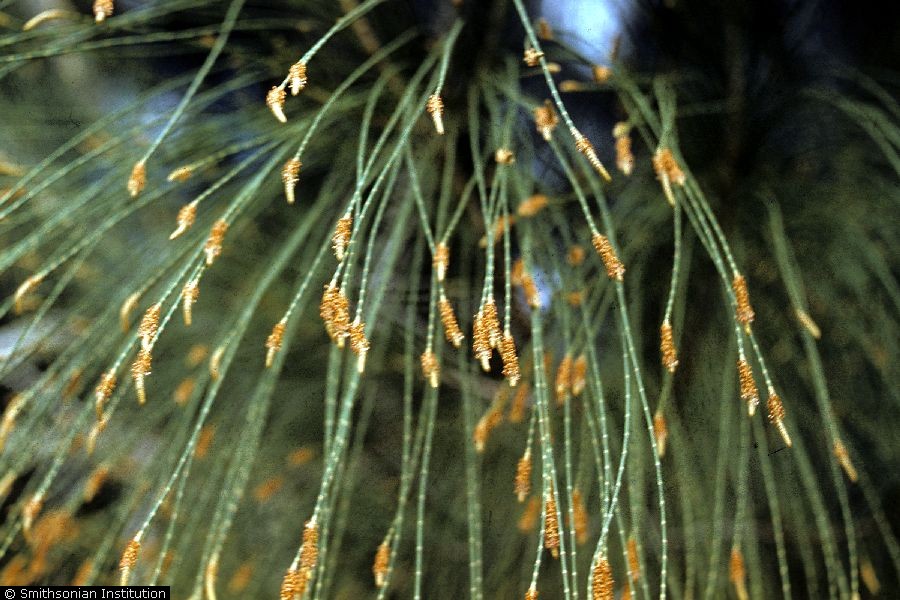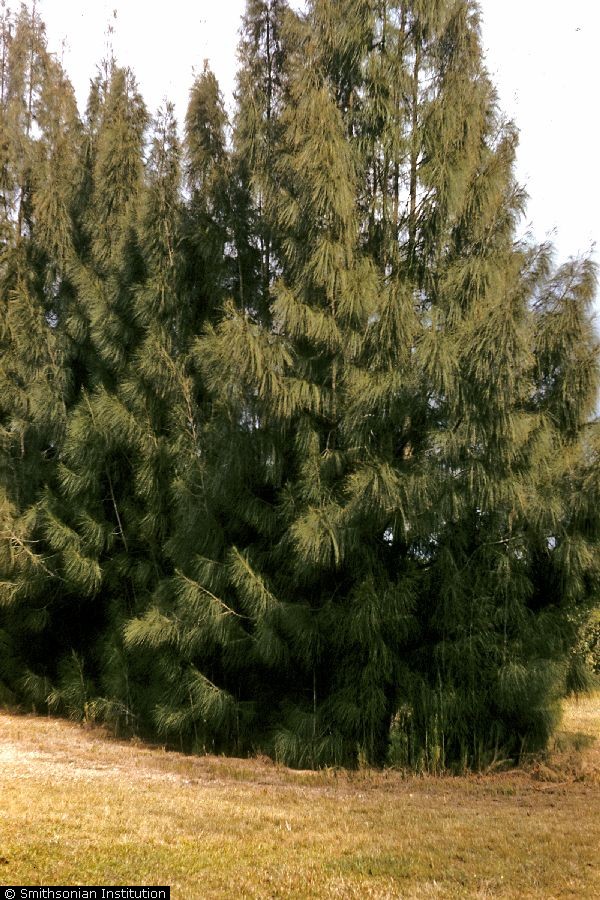 |
|
R.A. Howard @ USDA-NRCS PLANTS Database |
 |
| R.A. Howard @ USDA-NRCS PLANTS Database |
Translate this page:
Summary
Physical Characteristics

 Casuarina cristata is an evergreen Tree growing to 12 m (39ft 4in) at a fast rate.
Casuarina cristata is an evergreen Tree growing to 12 m (39ft 4in) at a fast rate.
See above for USDA hardiness. It is hardy to UK zone 9. It is in leaf all year. The species is monoecious (individual flowers are either male or female, but both sexes can be found on the same plant).
Suitable for: light (sandy), medium (loamy) and heavy (clay) soils and prefers well-drained soil. Suitable pH: mildly acid, neutral and basic (mildly alkaline) soils. It cannot grow in the shade. It prefers dry or moist soil.
UK Hardiness Map
US Hardiness Map
Synonyms
C. lepidophylla.
Plant Habitats
Woodland Garden Canopy; Secondary; South Wall. By. West Wall. By.
Edible Uses
References More on Edible Uses
Medicinal Uses
Plants For A Future can not take any responsibility for any adverse effects from the use of plants. Always seek advice from a professional before using a plant medicinally.
None known
References More on Medicinal Uses
The Bookshop: Edible Plant Books
Our Latest books on Perennial Plants For Food Forests and Permaculture Gardens in paperback or digital formats.

Edible Tropical Plants
Food Forest Plants for Hotter Conditions: 250+ Plants For Tropical Food Forests & Permaculture Gardens.
More

Edible Temperate Plants
Plants for Your Food Forest: 500 Plants for Temperate Food Forests & Permaculture Gardens.
More

More Books
PFAF have eight books available in paperback and digital formats. Browse the shop for more information.
Shop Now
Other Uses
Fuel Tannin Wood
The bark is rich in tannin[229]. Wood - very hard, not durable, takes a good polish. Mainly used for furniture and fencing, it is also a good fuel[156, 229].
Special Uses
Food Forest
References More on Other Uses
Cultivation details
Requires a well-drained moisture-retentive soil in full sun[200]. A report for Australian gardens says that it prefers growing in dry areas but also thrives in very wet soils[157]. Fast growing[157]. This plant tolerates temperatures down to at least -7°c in Australian gardens[157] although this cannot be translated directly to British gardens due to our cooler summers and longer, colder wetter winters. It might succeed outdoors in the mildest areas of the country[200]. The plant produces suckers from the roots and often forms dense groves[229]. Unlike most members of this genus, this plant does not fix atmospheric nitrogen[200]. In garden design, as well as the above-ground architecture of a plant, root structure considerations help in choosing plants that work together for their optimal soil requirements including nutrients and water. The root pattern is suckering with new plants from underground runners away from the plant [2-1].
References Carbon Farming Information and Carbon Sequestration Information
Temperature Converter
Type a value in the Celsius field to convert the value to Fahrenheit:
Fahrenheit:
The PFAF Bookshop
Plants For A Future have a number of books available in paperback and digital form. Book titles include Edible Plants, Edible Perennials, Edible Trees,Edible Shrubs, Woodland Gardening, and Temperate Food Forest Plants. Our new book is Food Forest Plants For Hotter Conditions (Tropical and Sub-Tropical).
Shop Now
Plant Propagation
Seed - sow late winter to early summer in a greenhouse and only just cover the seed[138]. When they are large enough to handle, prick the seedlings out into individual pots and grow them on in a greenhouse for at least their first winter. Plant them out into their permanent positions in late spring or early summer, after the last expected frosts. Cuttings of half-ripe wood, July/August in a frame[157, 200].
Other Names
If available other names are mentioned here
Native Range
AUSTRALASIA: Australia (New South Wales, Queensland (southeast))
Weed Potential
Right plant wrong place. We are currently updating this section.
Please note that a plant may be invasive in one area but may not in your area so it's worth checking.
Conservation Status
IUCN Red List of Threatened Plants Status :

Growth: S = slow M = medium F = fast. Soil: L = light (sandy) M = medium H = heavy (clay). pH: A = acid N = neutral B = basic (alkaline). Shade: F = full shade S = semi-shade N = no shade. Moisture: D = dry M = Moist We = wet Wa = water.
Now available:
Food Forest Plants for Mediterranean Conditions
350+ Perennial Plants For Mediterranean and Drier Food Forests and Permaculture Gardens.
[Paperback and eBook]
This is the third in Plants For A Future's series of plant guides for food forests tailored to
specific climate zones. Following volumes on temperate and tropical ecosystems, this book focuses
on species suited to Mediterranean conditions—regions with hot, dry summers and cool, wet winters,
often facing the added challenge of climate change.
Read More
Expert comment
Author
Miq.
Botanical References
200
Links / References
For a list of references used on this page please go here
Readers comment
© 2010, Plants For A Future. Plants For A Future is a charitable company limited by guarantee, registered in England and Wales. Charity No. 1057719, Company No. 3204567.